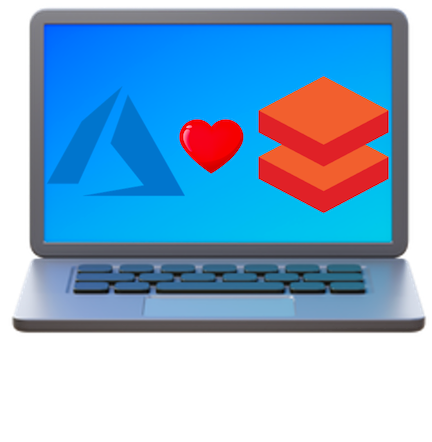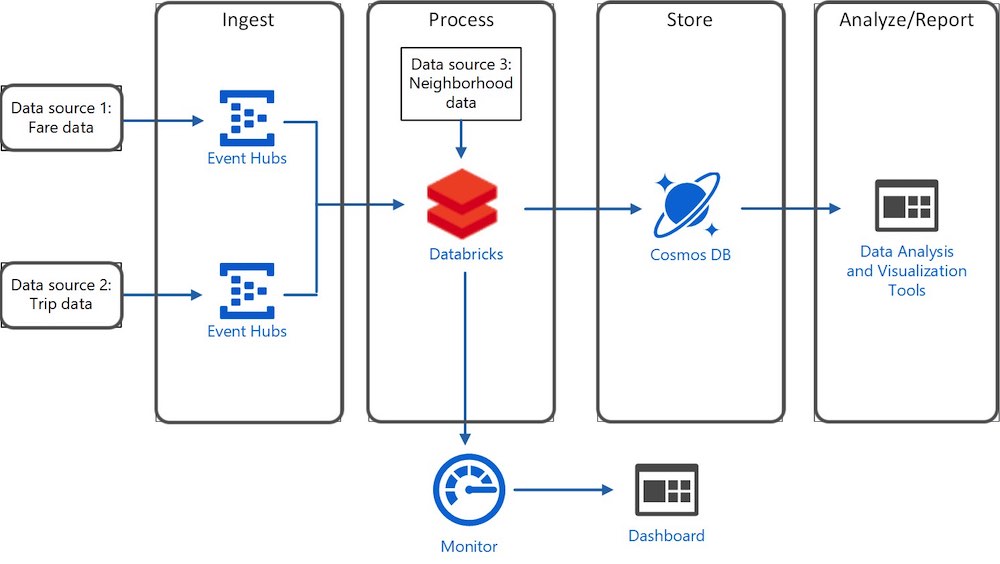



Azure Data Bricks
Azure Databricks is a powerful analytics platform that combines the best of Apache Spark and Azure cloud computing. It is a fully managed service that allows users to quickly and easily build, train, and deploy machine learning models, as well as explore and analyze large data sets.

So, when might Azure Databricks be a good choice for your organization? Here are a few key scenarios:
- ➼ Large-scale data processing and analysis:
If you have large data sets that need to be processed and analyzed quickly, Azure Databricks can be a great solution. It is built on top of Apache Spark, which is known for its ability to handle big data processing and analysis tasks efficiently.
- ➼ Machine learning and data science:
Azure Databricks is an ideal platform for building and training machine learning models. It offers a wide range of libraries and tools for data science tasks, including support for popular languages like Python and R.
- ➼ Collaborative data analysis:
Azure Databricks is designed to be a collaborative platform, with features like notebooks, dashboards, and the ability to share data and insights with team members. This makes it a great choice for organizations that need to work together on data analysis projects.
- ➼ Integration with Azure:
As an Azure service, Azure Databricks integrates seamlessly with other Azure services, such as Azure Storage, Azure SQL Database, and Azure Machine Learning. This makes it easy to build end-to-end analytics solutions that leverage the full power of Azure.
Overall, Azure Databricks is a valuable tool for organizations that need to process and analyze large data sets, build and train machine learning models, and collaborate on data analysis projects. If any of these scenarios sound relevant to your organization, it may be worth considering Azure Databricks as a solution.
Cost Analysis
The cost of using Azure Databricks depends on a variety of factors, including the type and size of the cluster you choose, the type of instance you use, and the amount of data you process.
In general, Azure Databricks offers two pricing options:
- Pay-as-you-go:
With this option, you pay for the resources you consume on an hourly basis. The cost is based on the type and size of the cluster you choose, as well as the type of instance you use. You can choose from a variety of instance types, including standard, high concurrency, and GPU-based instances.
- Committed use discounts:
With this option, you commit to a certain amount of usage over a one- or three-year period in exchange for discounted rates. The cost is based on the type and size of the cluster you choose, as well as the type of instance you use.
In addition to the cost of the cluster and instances, you may also incur additional costs for data storage and data transfer. For example, if you store data in Azure Storage, you will be charged for the storage and any data transfer.
It is difficult to provide a detailed cost analysis without knowing specific details about your usage, but you can use Azure’s pricing calculator to get a rough estimate of the costs for your specific use case. It is a good idea to carefully consider your usage patterns and choose a pricing option that aligns with your needs to ensure that you get the best value for your money.
Should you use it ?
There are a few potential reasons why you might not want to use Azure Databricks:
- Cost:
Azure Databricks can be a relatively expensive solution, particularly if you have high usage patterns. If you have a small data set or do not need the advanced features offered by Azure Databricks, it may be more cost-effective to use a different solution.
- Complexity:
Azure Databricks is a powerful platform, but it can also be complex to use, particularly for users who are new to big data processing and analytics. If you do not have a team with the necessary expertise or resources to use Azure Databricks effectively, it may not be the best choice for your organization.
- Limited integration:
While Azure Databricks integrates with a number of Azure services, it may not have integration with other tools or platforms that you use. If you need a solution that integrates with a wider range of tools and platforms, you may want to consider other options.
Cost Breakup
The cost of using Azure Databricks is composed of several different components:
- ➼ Cluster and instance costs:
The main cost of using Azure Databricks is the cost of the cluster and instances. The cost is based on the type and size of the cluster you choose, as well as the type of instance you use. You can choose from a variety of instance types, including standard, high concurrency, and GPU-based instances.
- ➼ Data storage costs:
If you store data in Azure Storage or another data store, you will be charged for the storage and any data transfer.
- ➼ Data transfer costs:
If you transfer data in or out of Azure Databricks, you may be charged for the data transfer.
- ➼ Licensing costs:
Some features and tools in Azure Databricks may require additional licensing fees. For example, using the Databricks Runtime for Machine Learning or the Databricks Delta Lake open-source storage layer may incur additional costs.
Overall, Azure Databricks can be a valuable tool for organizations that need to process and analyze large data sets, build and train machine learning models, and collaborate on data analysis projects. However, it may not be the best choice for everyone, depending on your specific needs and resources. It is important to carefully consider your organization’s needs and budget before deciding whether Azure Databricks is the right solution for you.
Good YouTube Video for Azure Databricks
